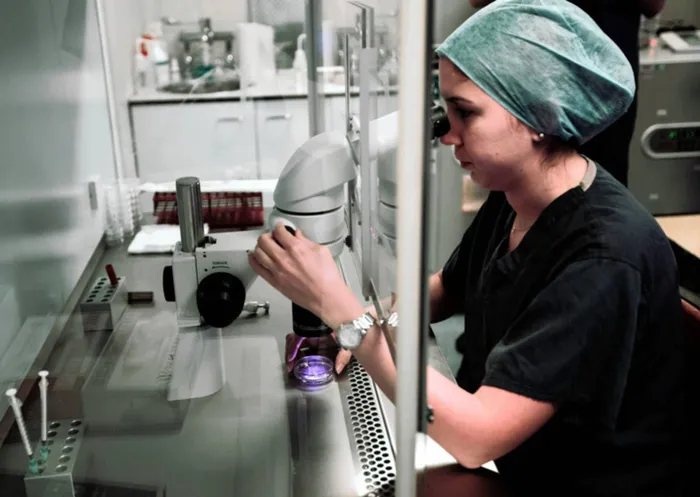Designer babies by Crispr-Cas9

An embryologist works on embryo at a fertility clinic. An embryologist works on embryo at a fertility clinic.
A revolutionary technique for editing the DNA of the human genome has been named as the scientific breakthrough of the year.
The extremely precise gene-editing technology, called Crispr-Cas9, has already been used to alter the genes of “spare” human IVF embryos in a controversial experiment conducted in China.
The technique was voted by the editors of the US journal Science as the most important research breakthrough of 2015. It was the first time that the magazine chose a winner that had twice been a runner-up in previous years.
“This is the year it broke away from the pack, revealing its true power in a series of spectacular achievements,” said John Travis, managing news editor of Science.
The journal Nature also cited Crispr-Cas9 in its “10 people who mattered” in 2015. The journal said that Junjiu Huang, of Sun Yat-sen University in Guangzhou, deserved recognition for his bold but highly controversial attempts to edit the DNA of human IVF embryos with Crispr-Cas9.
Dr Huang chose “spare” IVF embryos that were unable to develop in the womb for an experiment to disable the gene responsible for the blood disorder beta-thalessaemia. He told Nature earlier this year that he did it to deter people from using Crispr-Cas9 on viable IVF embryos until it was proven to be safe. “We wanted to show our data to the world so people know what really happened with this model,” he said.
News of the research caused deep concern around the world and triggered an international summit in Washington DC in December to discuss the ethics of engineering the human “germline” - sperm, eggs and embryos - using Crispr-Cas9.
Mr Travis said the technique for precision-editing the DNA of any living organism had matured into a “molecular marvel” over the past three years, when it was developed into a highly effective tool by researchers, including Jennifer Doudna, of the University of California, Berkeley, and Emmanuelle Charpentier, now at the Max Planck Institute for Infection Biology in Berlin.
At one point during the human gene-editing summit, Ms Charpentier described its capabilities as “mind-blowing”, according to Mr Travis. “It's the simple truth: for better or worse, we all now live in Crispr's world,” he added.
In addition to attempts at editing unviable IVF embryos, scientists also used Crispr-Cas9 to develop so-called “gene drive” technology, where the frequency of genetically modified traits could be amplified within a breeding population of insects so that up to 99 per cent of the subsequent offspring quickly inherited the GM trait.
In 2015, scientists demonstrated a Crispr-Cas9 gene drive in lab-grown fruit flies, showing that 97 per cent of them could end up inheriting a GM gene for body colouration. Other researchers followed this with laboratory studies demonstrating how gene drives could disseminate malaria resistance genes or infertility genes in breeding populations of mosquitoes - with the aim of controlling the spread of mosquito-borne infections.
“Debates are now erupting over the benefits and ecological risks of releasing such insects into the wild - and whether gene drives could also thwart invasive species such as Asian carp and cane toads, as well as combat other animal-borne pathogens such as the one causing Lyme disease,” Mr Travis said.
“In short, it's only slightly hyperbolic to say that if scientists can dream of a genetic manipulation, Crispr can now make it happen.”
The Independent
Virgins give birth thanks to IVF
New IVF test could boost baby chances
Trying for a baby? Try aspirin and yoga
Britain to genetically modify embryos
Banks’s ‘traumatic’ fertility treatment
Divorce: What about frozen embyros?
The jury is still out on egg freezing
China struggles with IVF demand
Genetic modification ‘should be allowed’
IVF linked to ovarian cancer
‘Need to allow gene editing to eliminate diseases’
Human genetic modification almost reality?